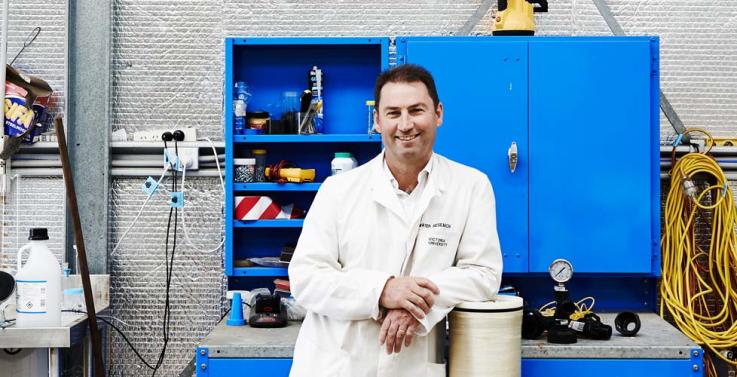
Scientists have designed a water treatment plant to operate in one of the world’s harshest environments.
A state-of-the-art wastewater treatment system being built for Davis station in Antarctica will convert effluent into some of the cleanest water in the world.
This effluent will have minimal impact on the marine environment when it’s discharged into the ocean.
Director of Victoria University’s Institute for Sustainability and Innovation, Professor Stephen Gray, said this project with the Australian Antarctic Division and other industry and academic partners combined the latest water treatment technologies to handle the specific challenges in Antarctica.
“The system’s designed to function in rugged conditions, be simple to operate, have low maintenance needs and require a minimal amount of chemicals to run it,” Professor Gray said. “The plant can even be operated remotely from Australia if needs be during the harsh Antarctic winter.”
The germ-killing technologies used in the advanced treatment plant will achieve an astounding 13 ‘log reduction’ in pathogens. A one log reduction kills 90% of pathogens; a two log reduction kills 99%; and so on to 11 decimal places. The average log reduction from a freshwater treatment plant in Australia is four to five.
“To achieve this high kill rate the treated effluent will undergo ozone disinfection, ceramic microfiltration, passage through a biologically activated carbon filter, reverse osmosis, ultraviolet disinfection and chlorination,” Professor Gray said. “The result will be some of the cleanest water in the world.”
There are no immediate plans to use the purified water for drinking but the team is researching that option in line with Australian and international drinking water quality guidelines.
The advanced treatment plant has been built to fit inside two shipping containers. This will include space for a laboratory where regular water quality tests can take place. After testing is completed in 2015 at TasWaters’ wastewater treatment plant, it will be shipped to Victoria University for extensive testing before being shipped to Antarctica for installation during the 2015/16 season.
Australian Antarctic Division project engineer Michael Packer said once in Antarctica the plant will be removed from the shipping containers and installed in a purpose-designed building alongside a secondary treatment plant being constructed by another team.
“The combination of the two treatment plants will provide an exciting new chapter in wastewater treatment,” Mr Packer said. “While this project provides so many challenges specific to this environment, the resulting technology offering a complete, self-contained and portable plant to produce purified recycled water could potentially find applications in a wide range of remote communities.”
The Victoria University team for this project also includes Professor Mikel Duke, Dr Jianhua Zhang, Dr Nicholas Milne and Dr Shobha Muthukumaran. The project is primarily funded and overseen by the Australian Water Recycling Centre of Excellence and supported through the Australian Government’s Collaborative Research Network. Other partners involved in the advanced treatment plant’s research, design and testing include the University of Melbourne, Veolia, AECOM and TasWater.
This is one of 20 projects featured in the new Research Highlights, which showcases fascinating examples of research making a real difference in our world.
